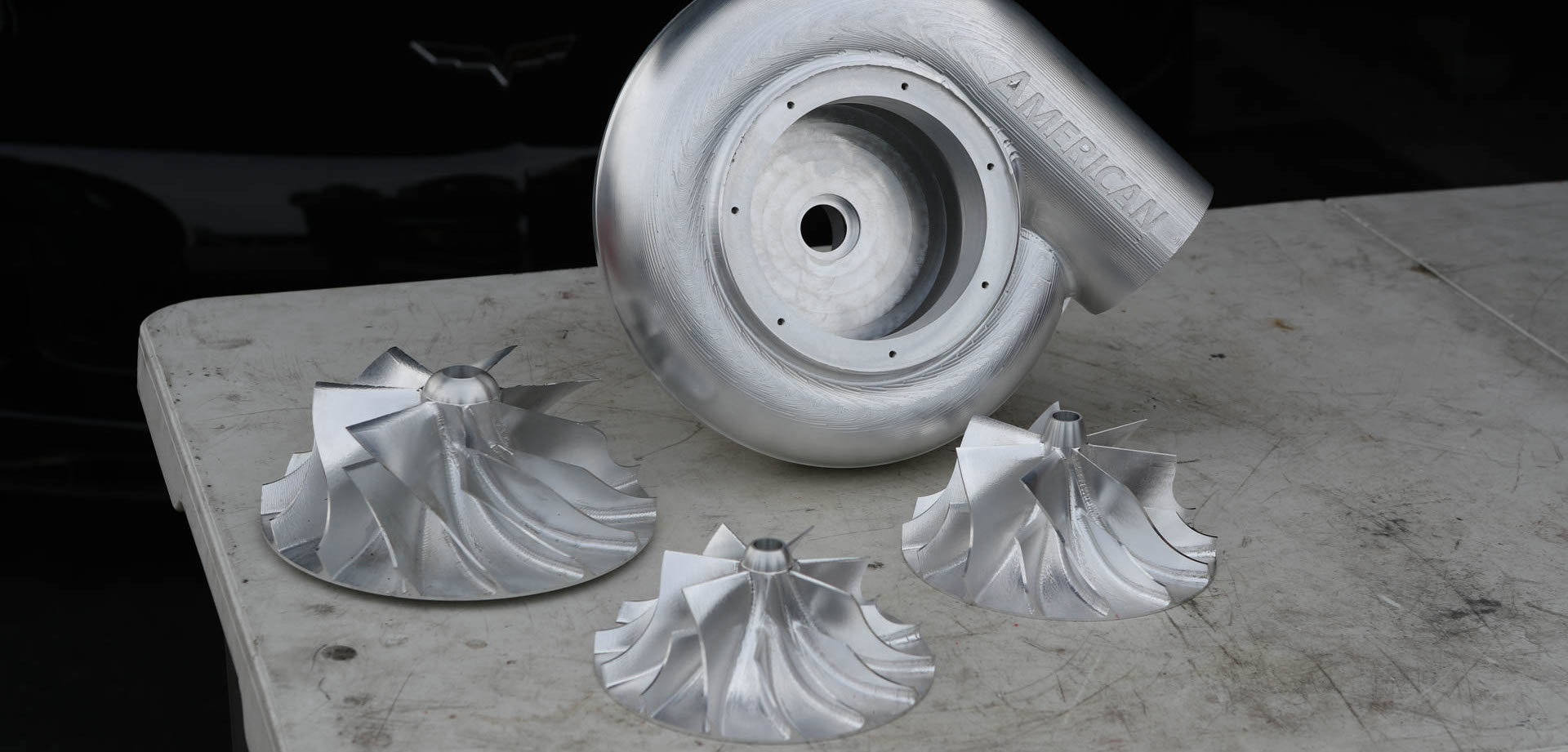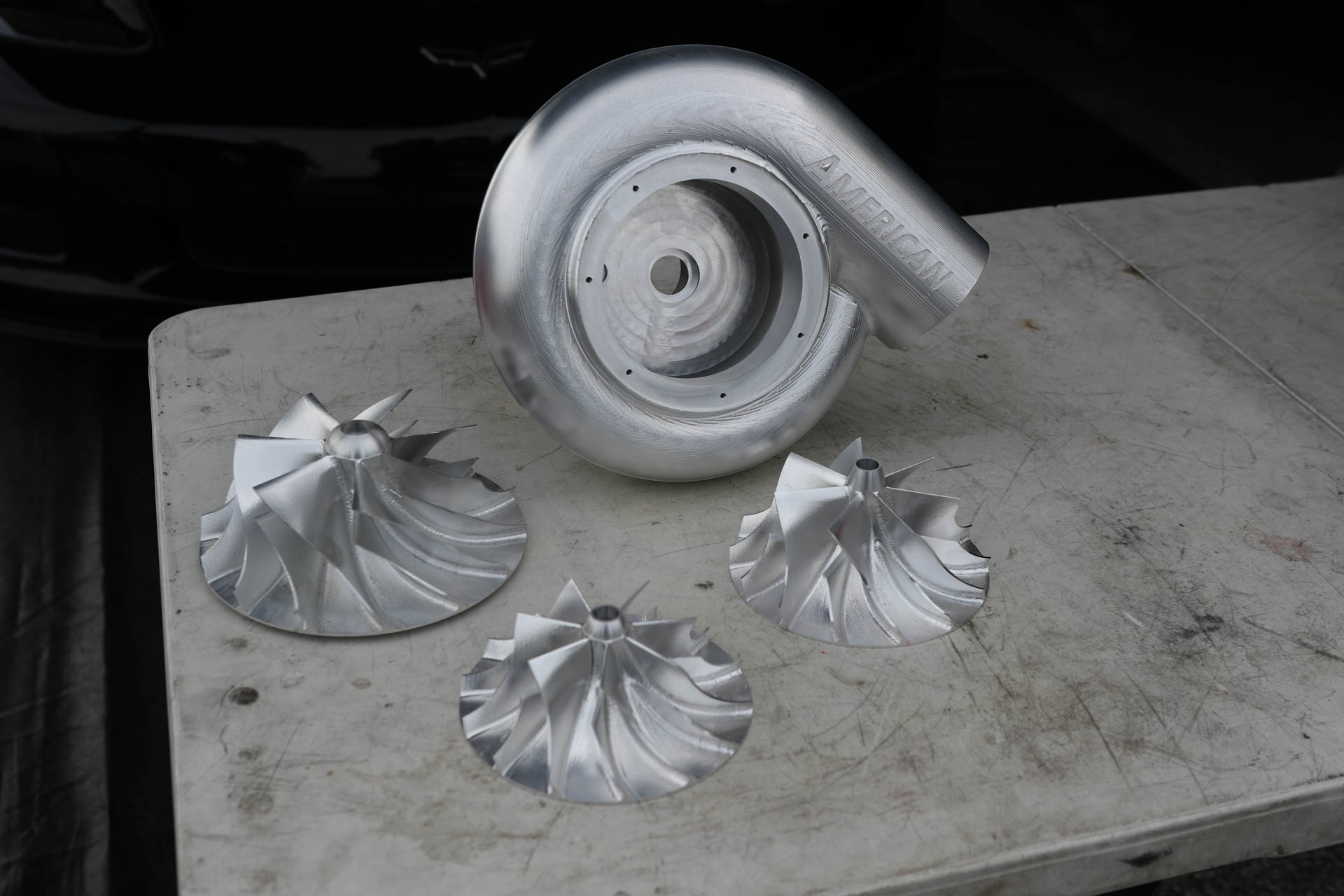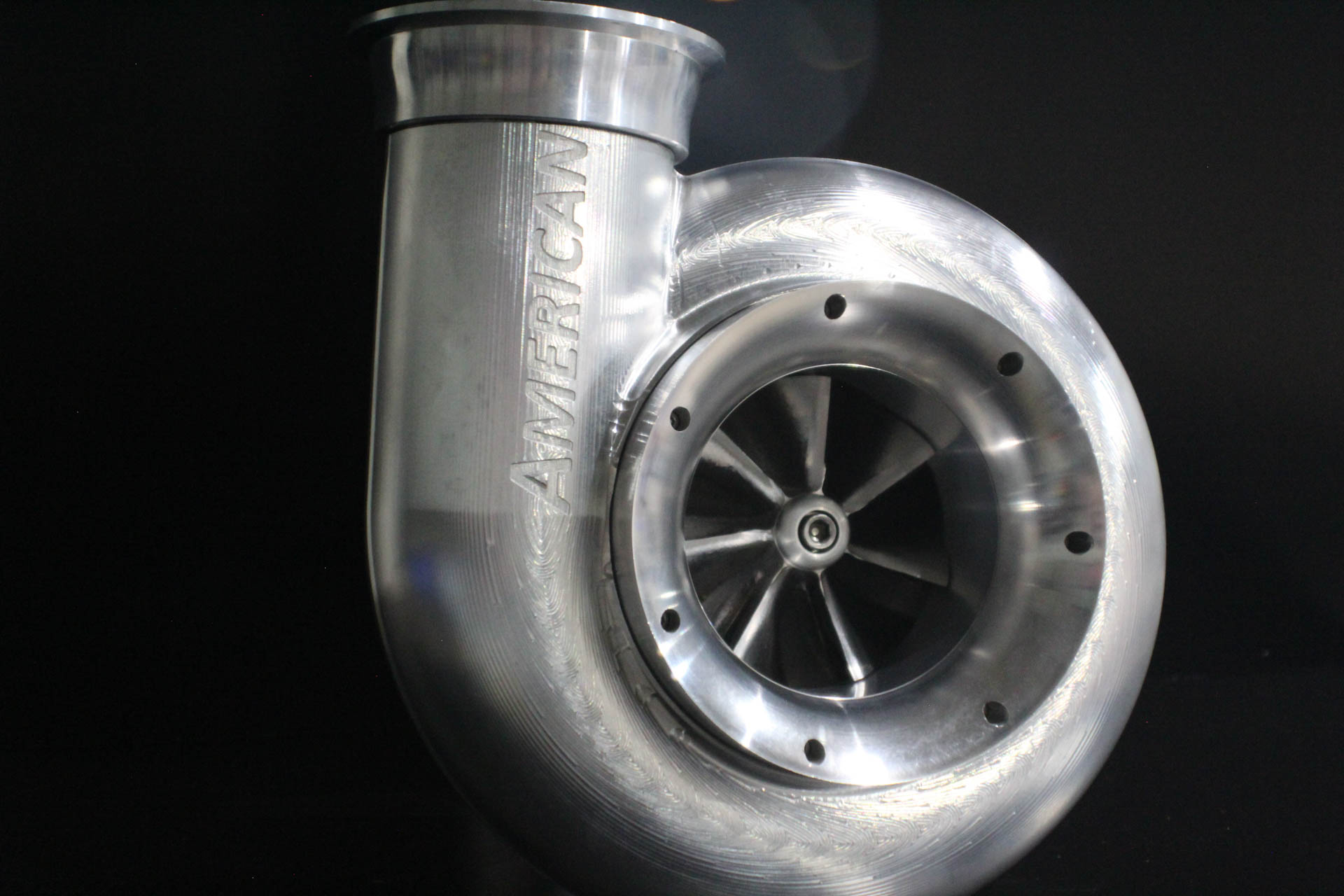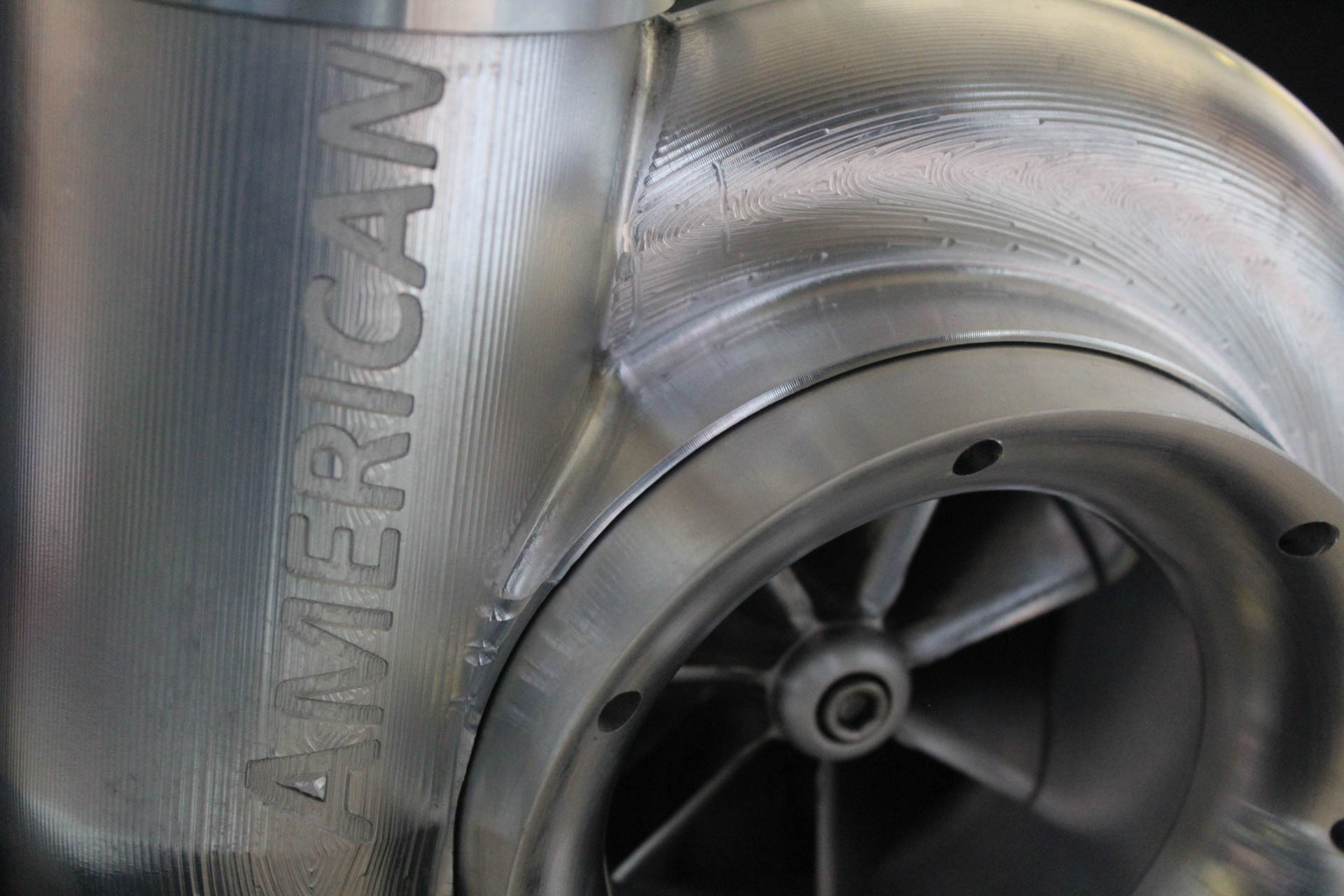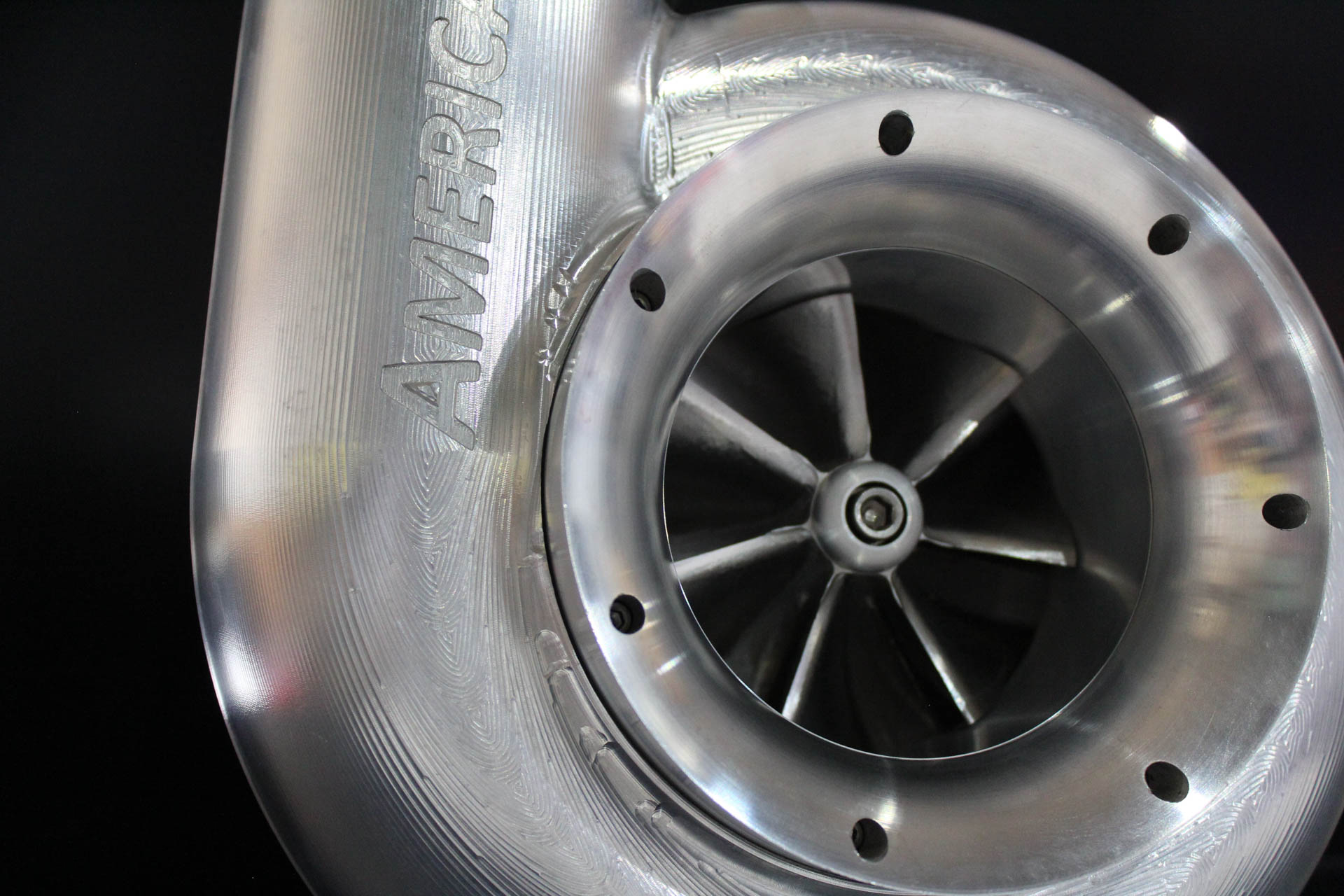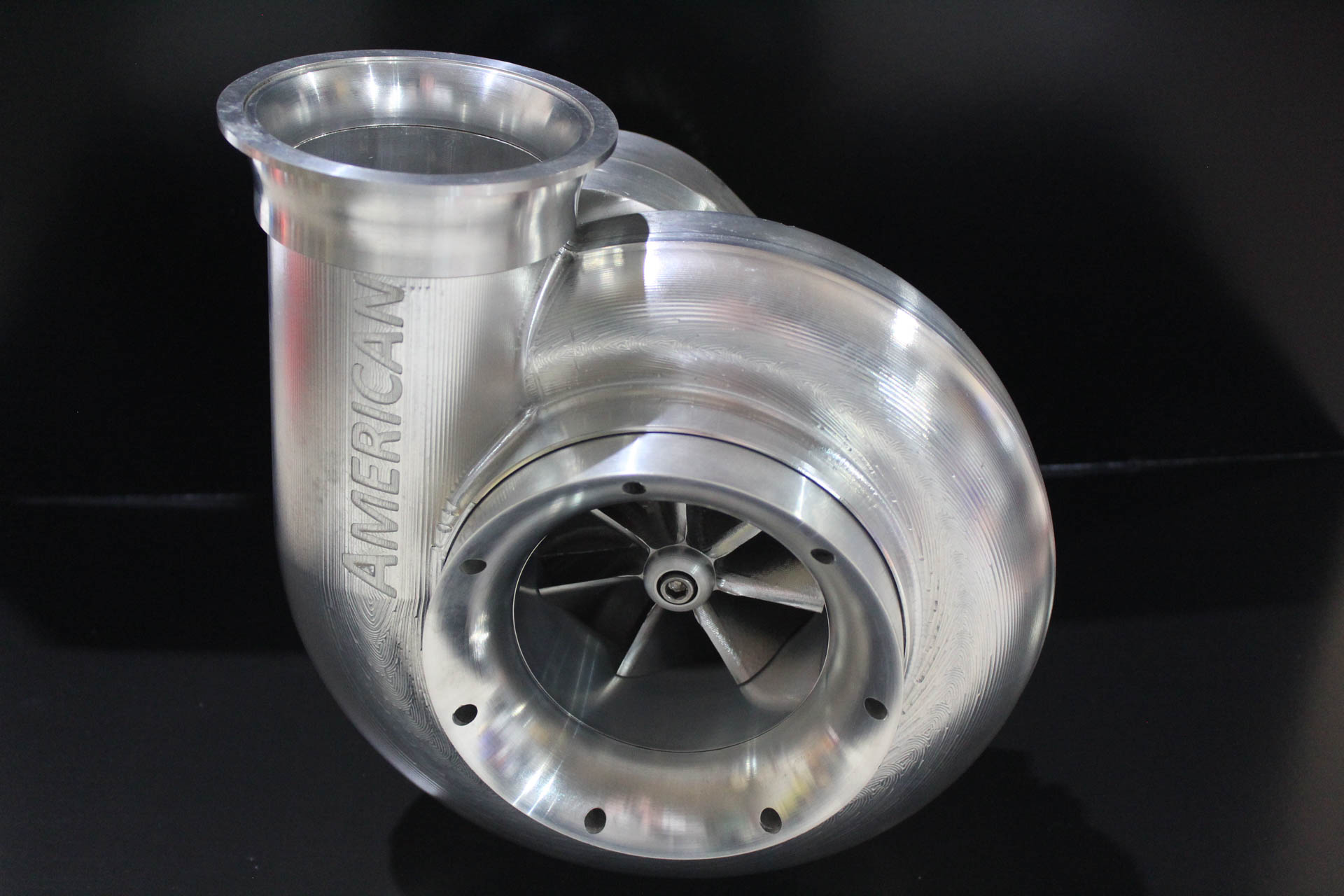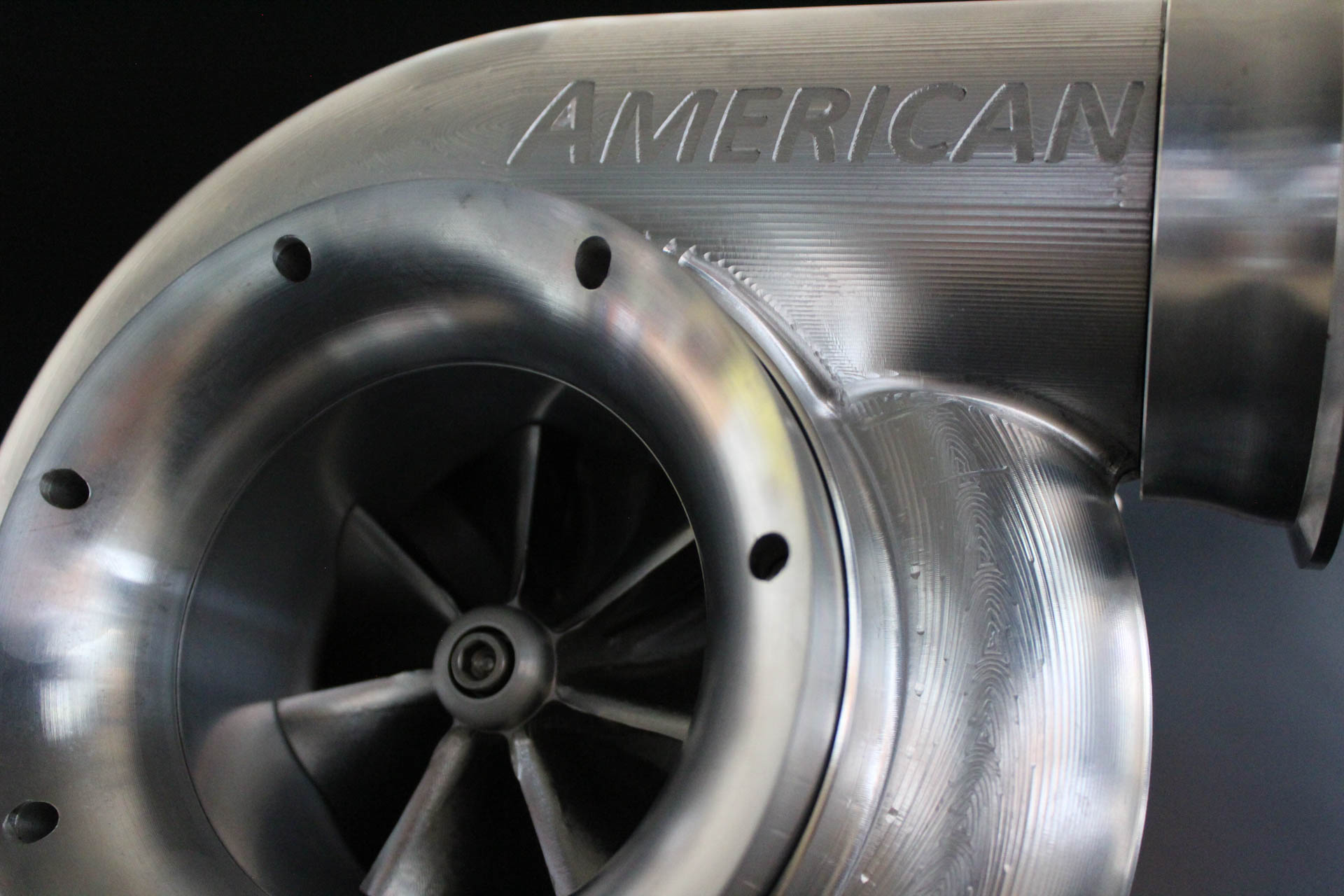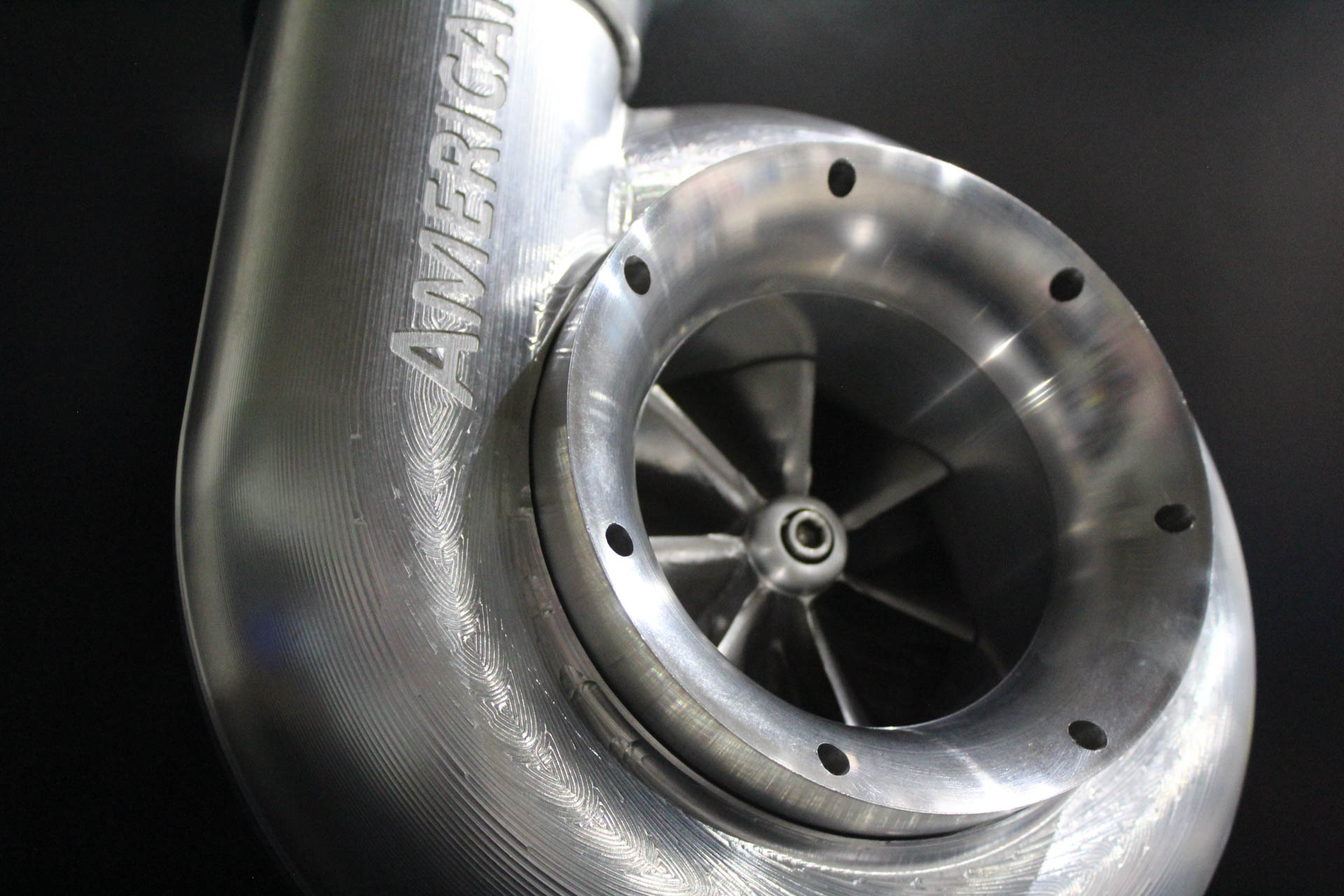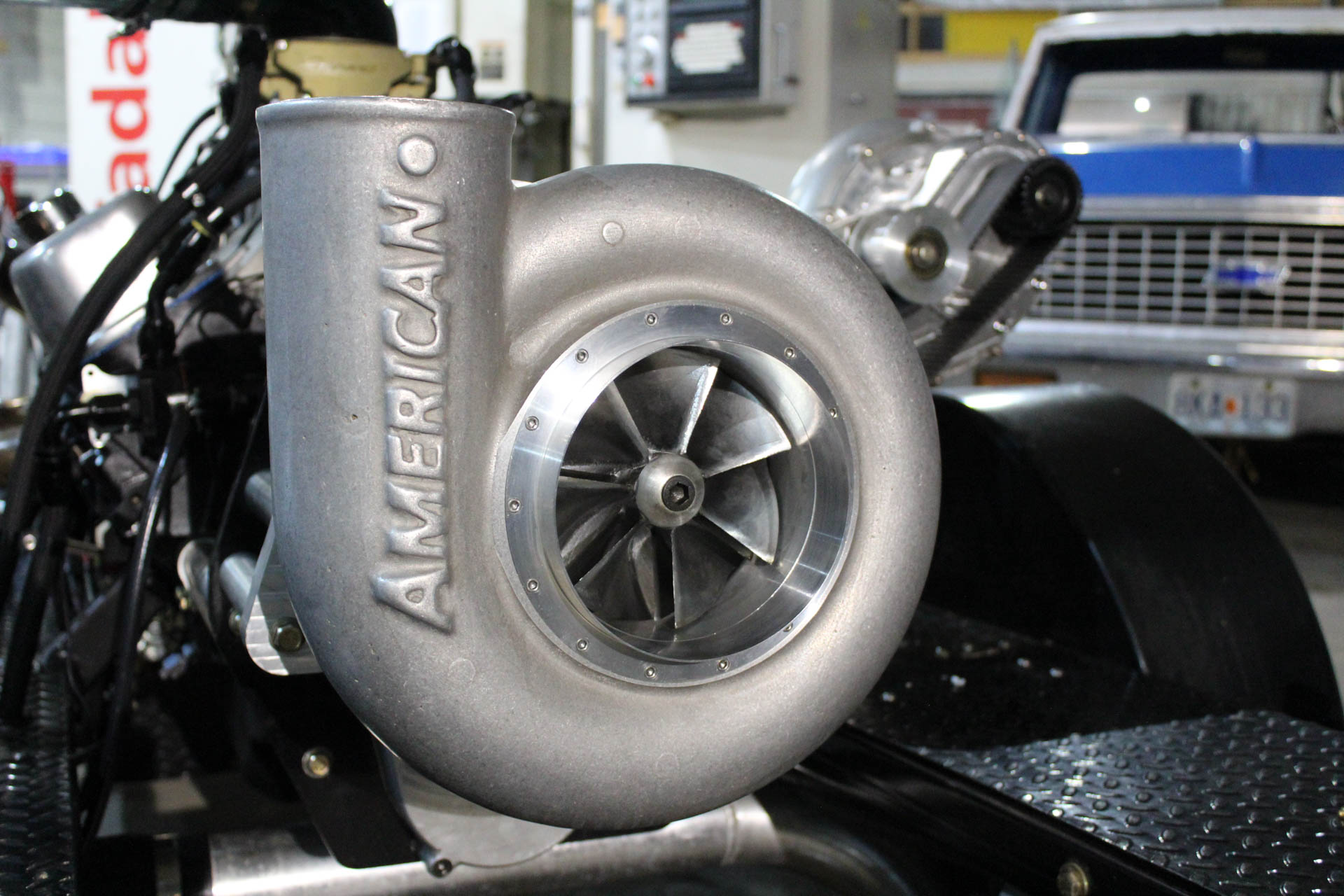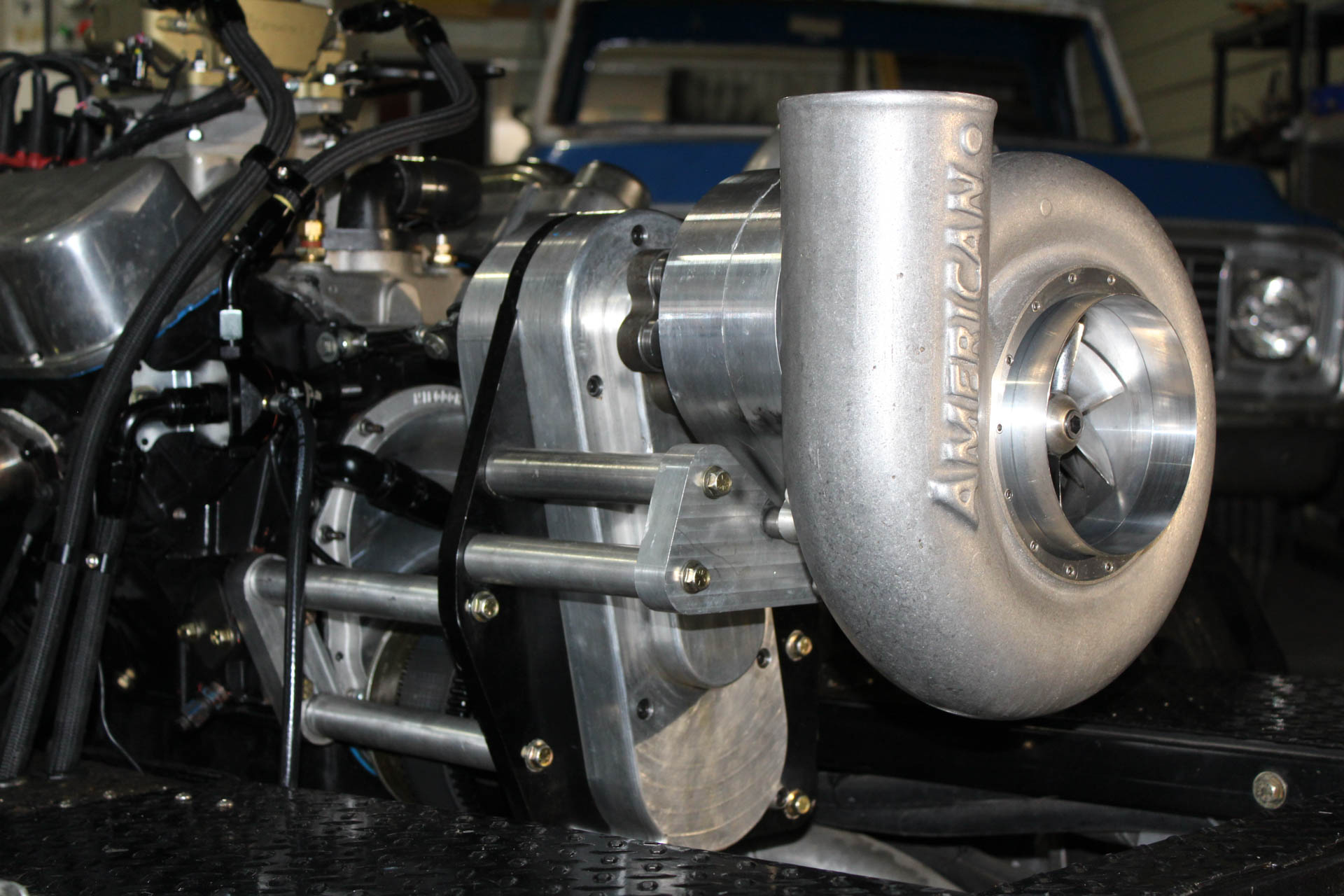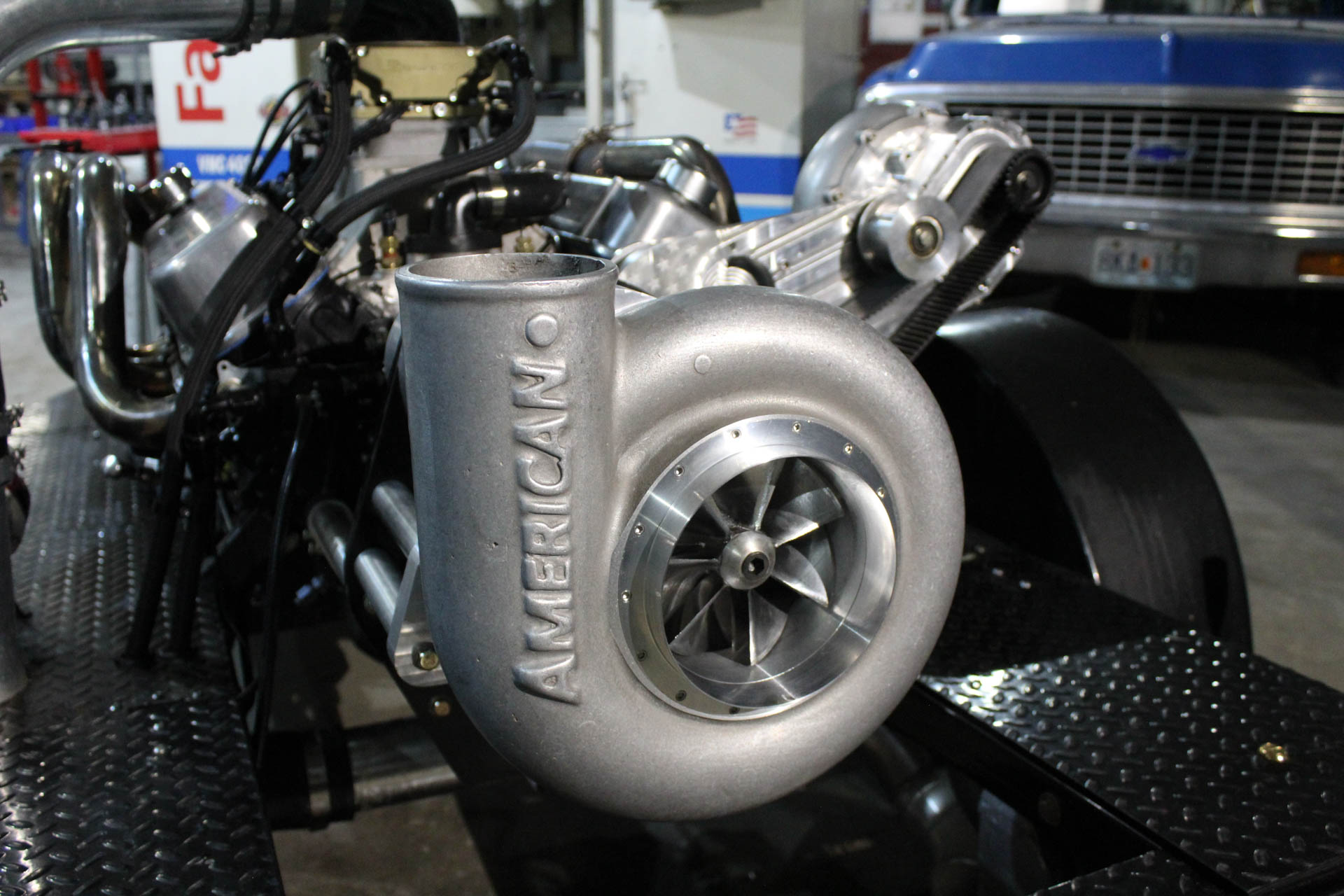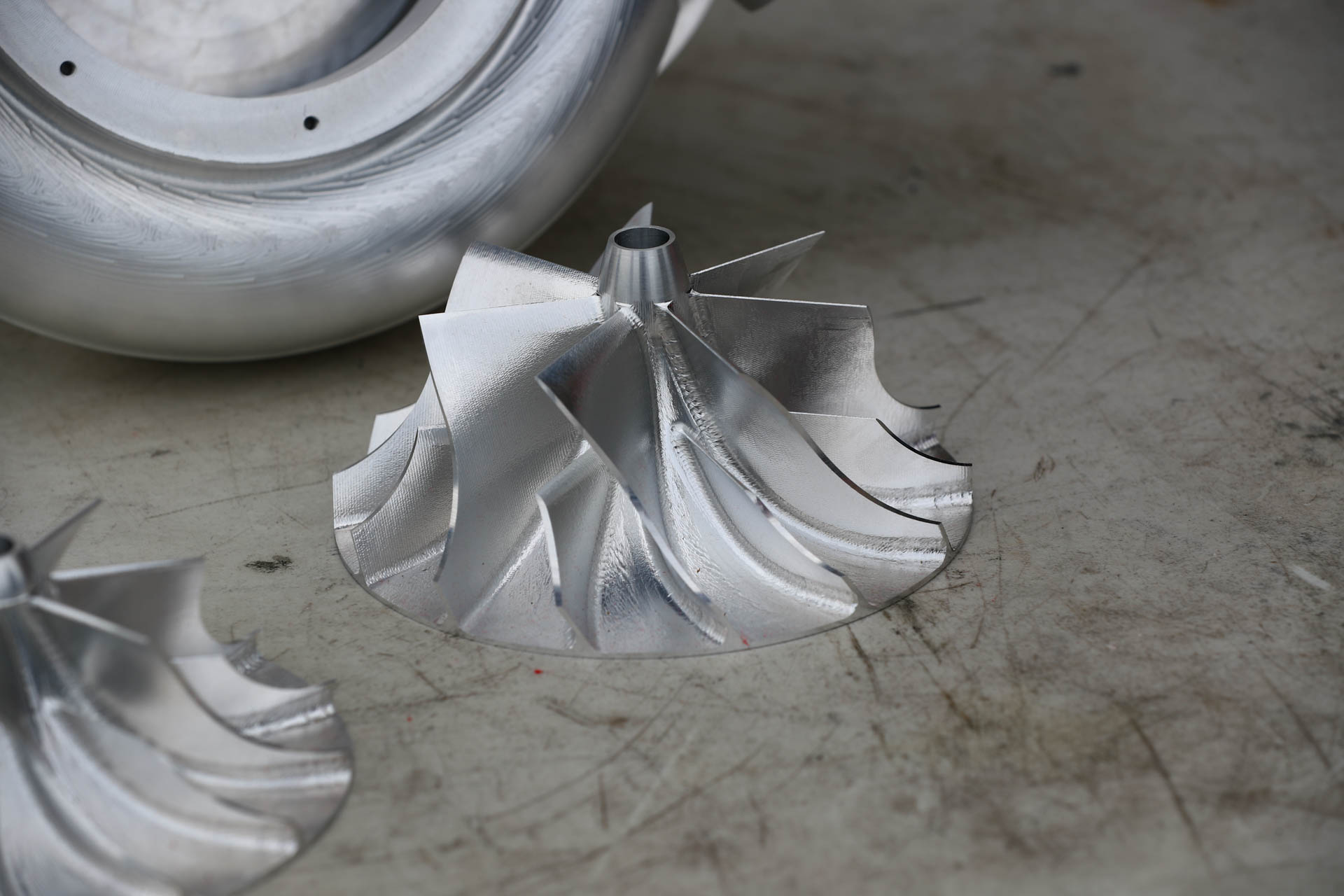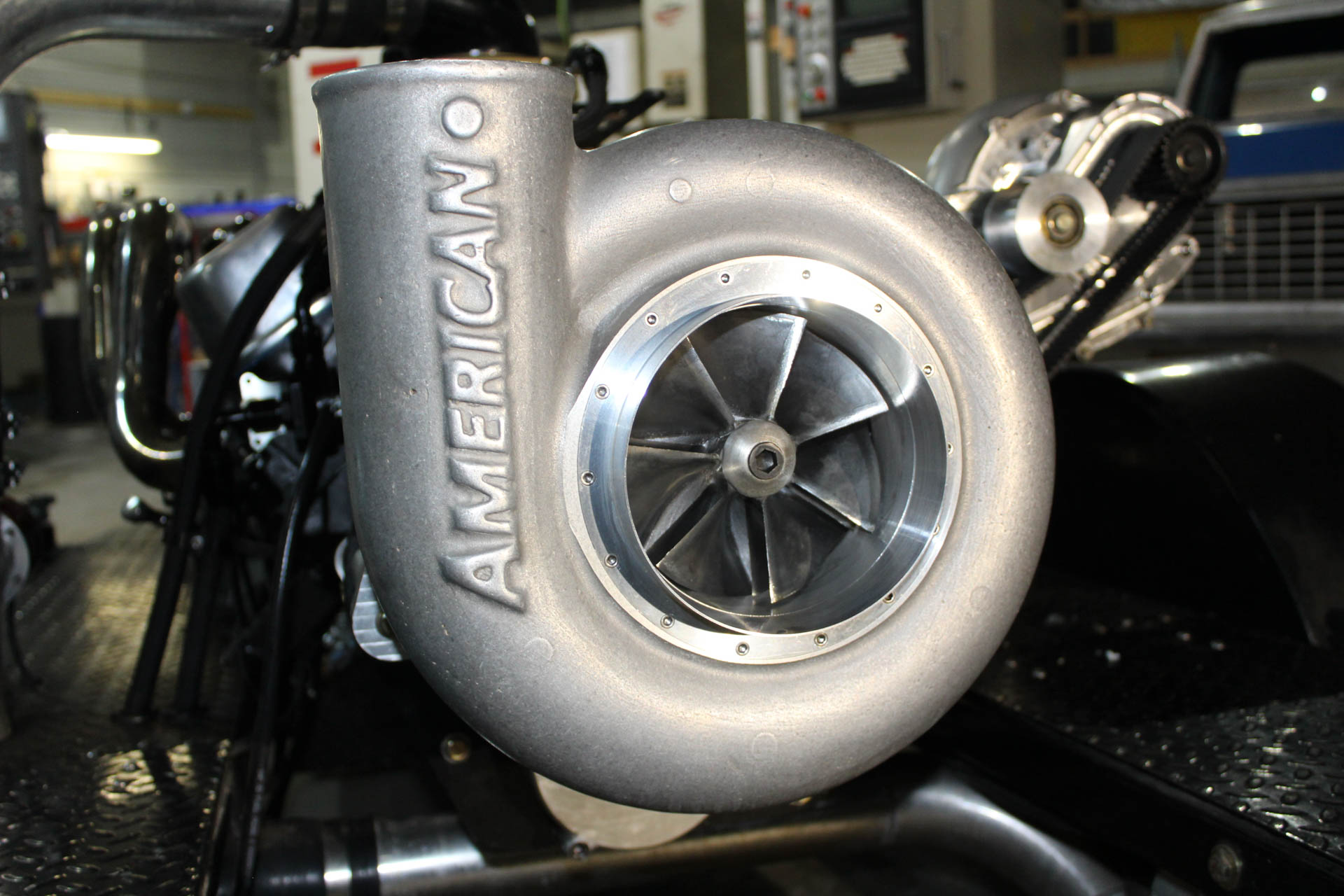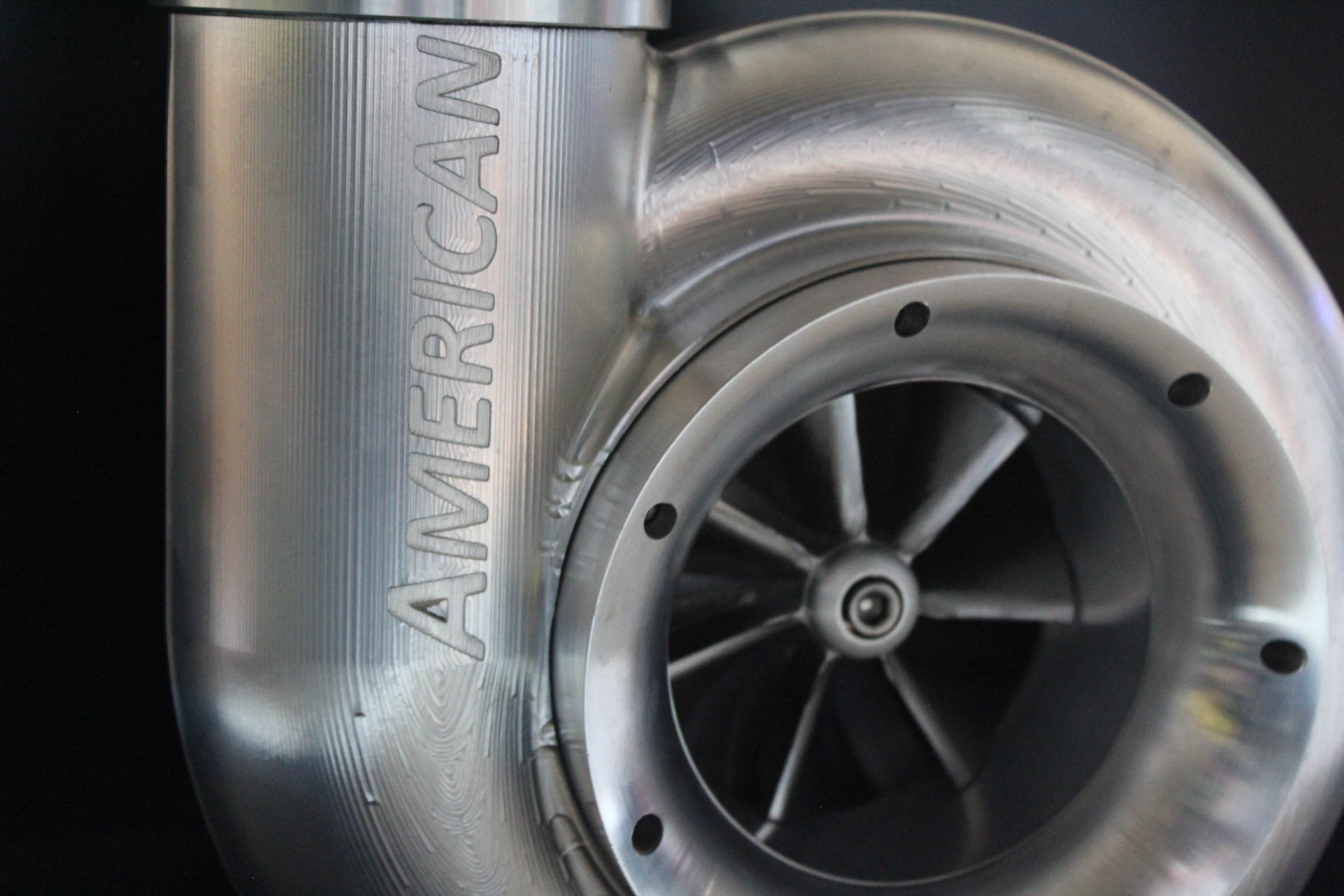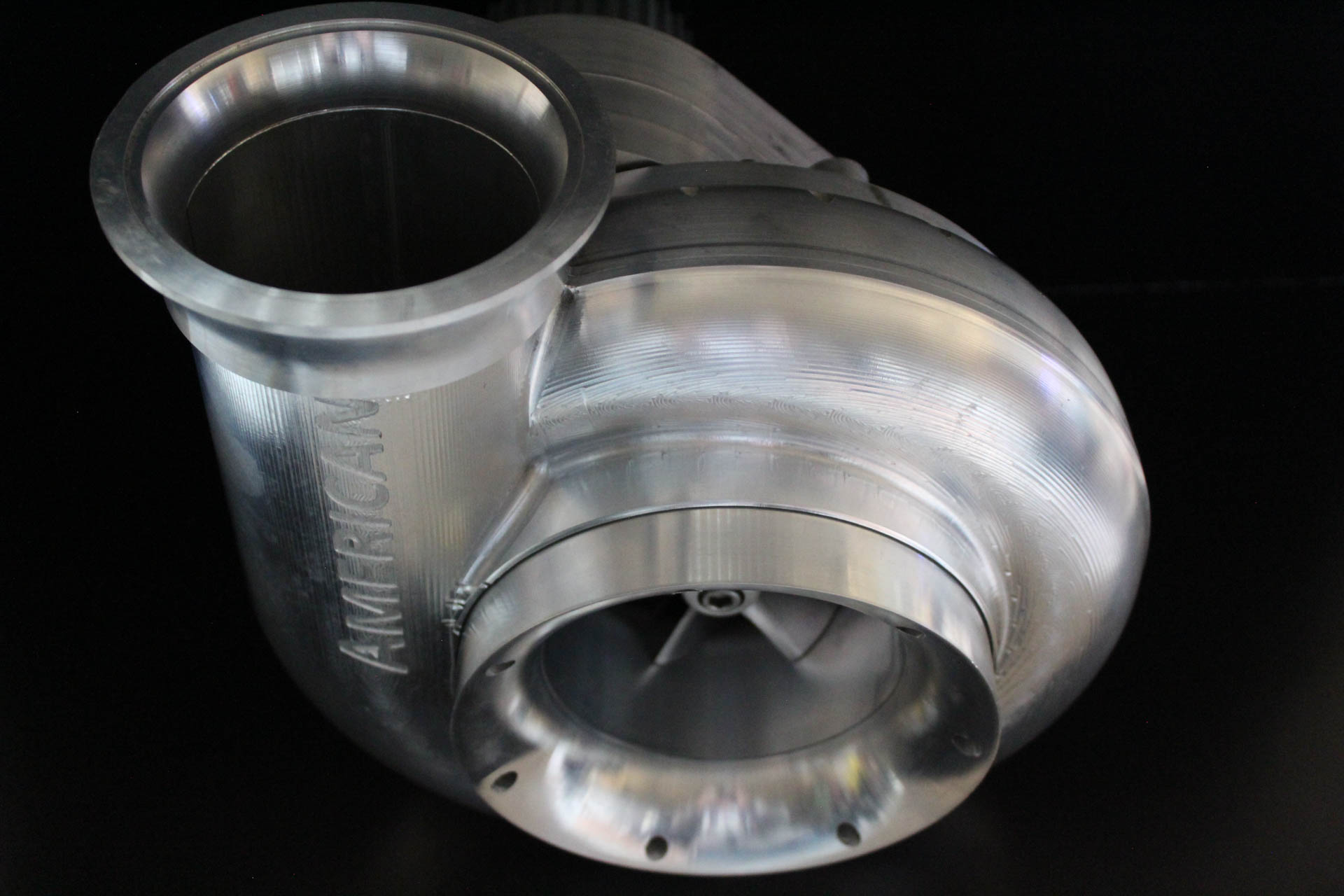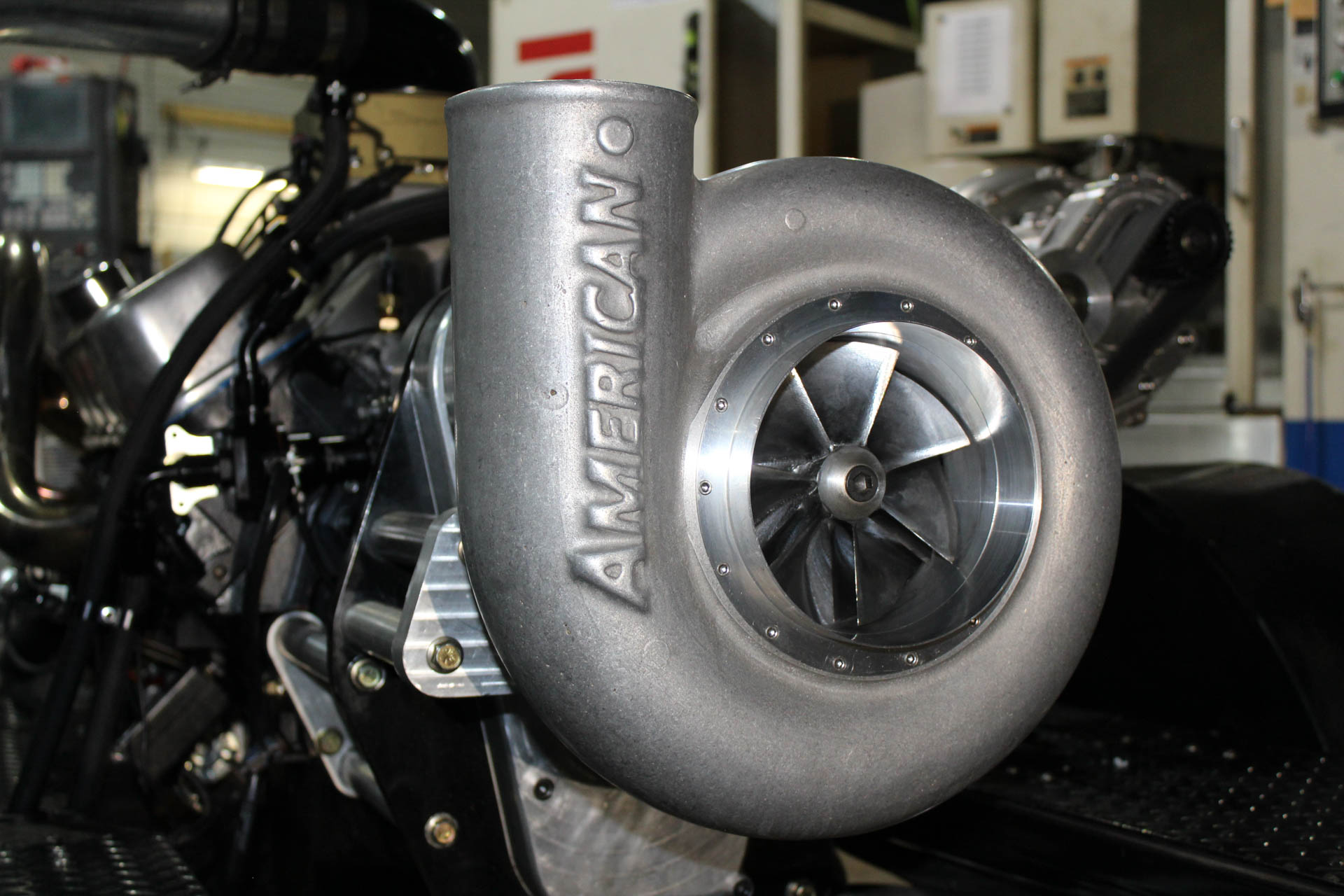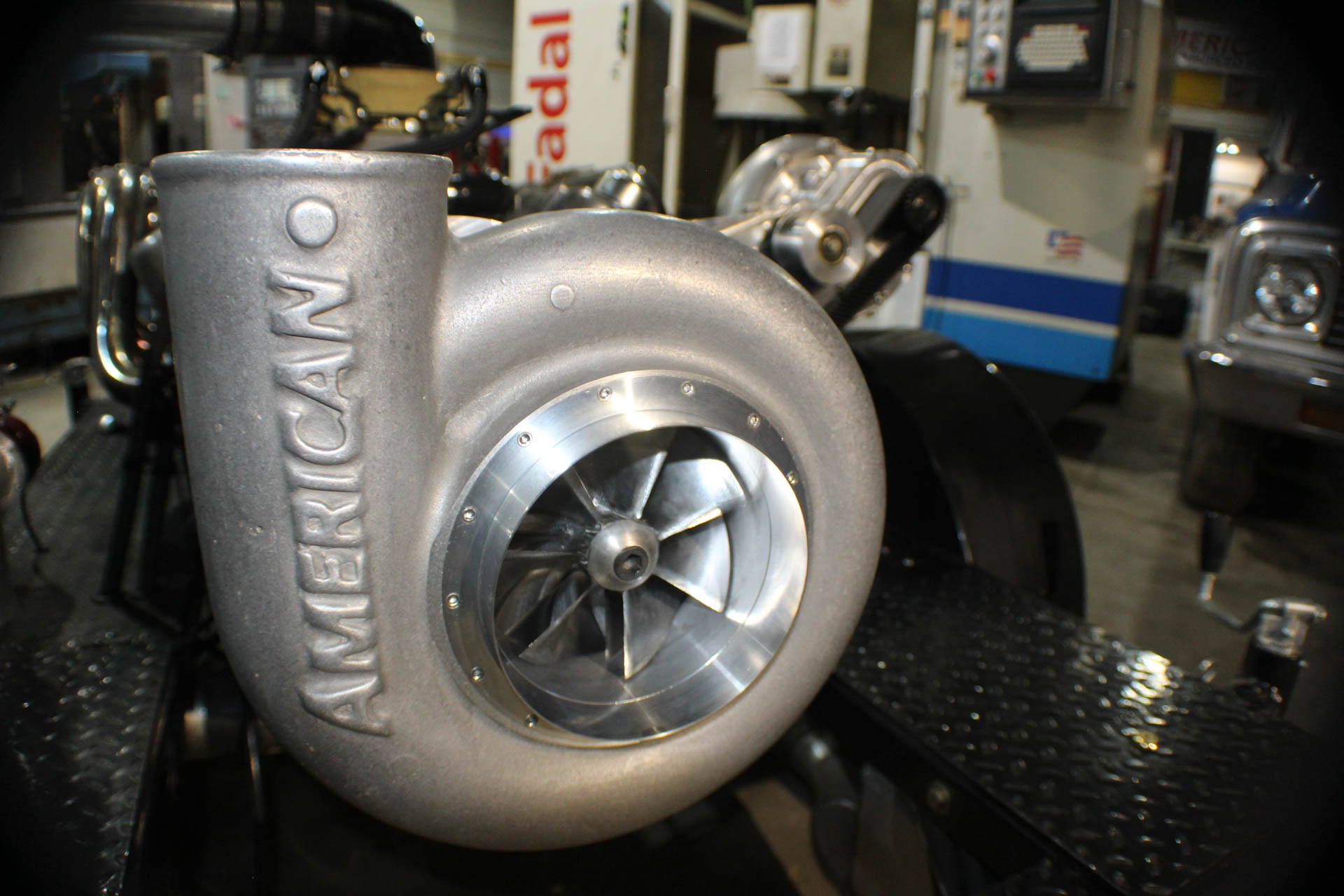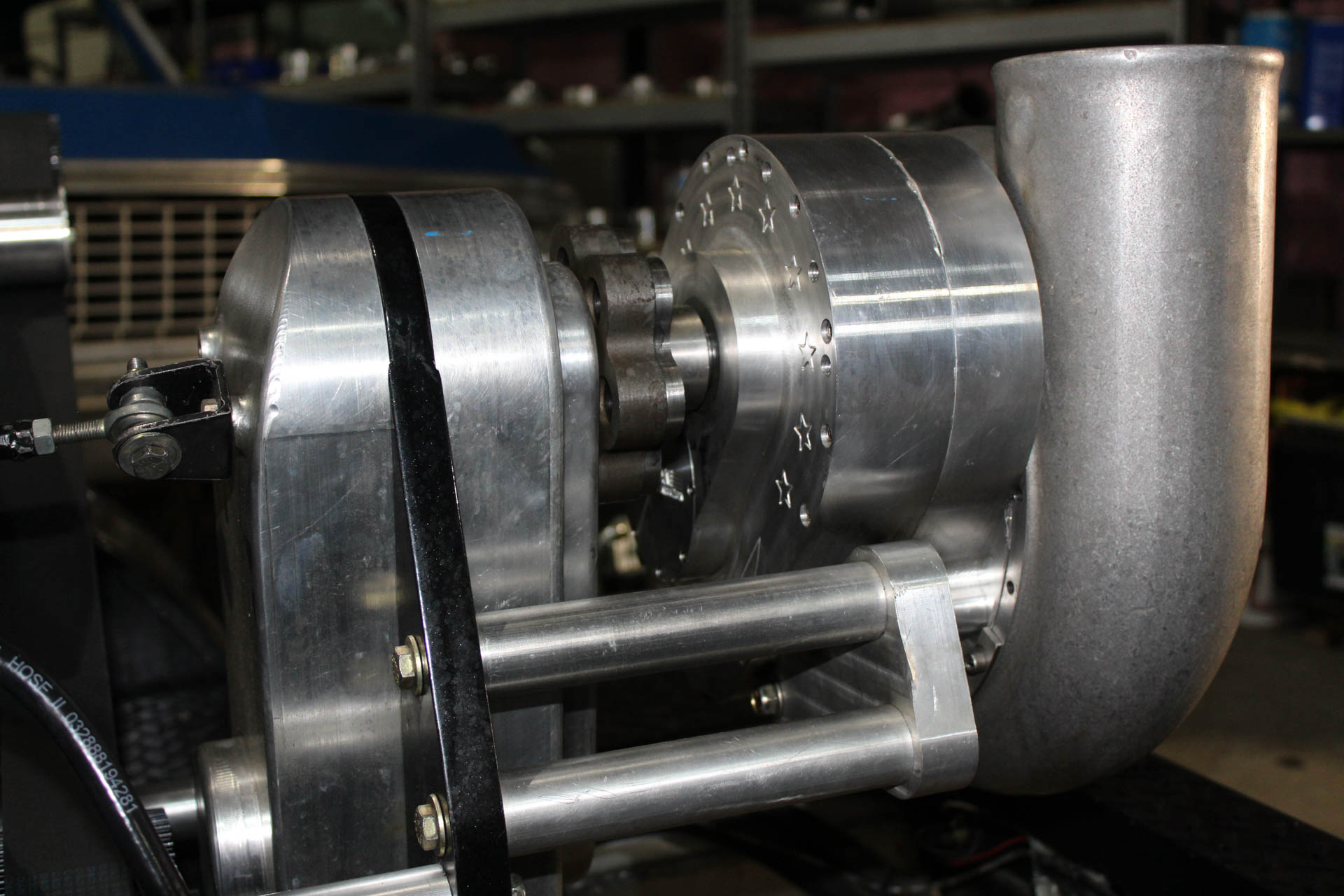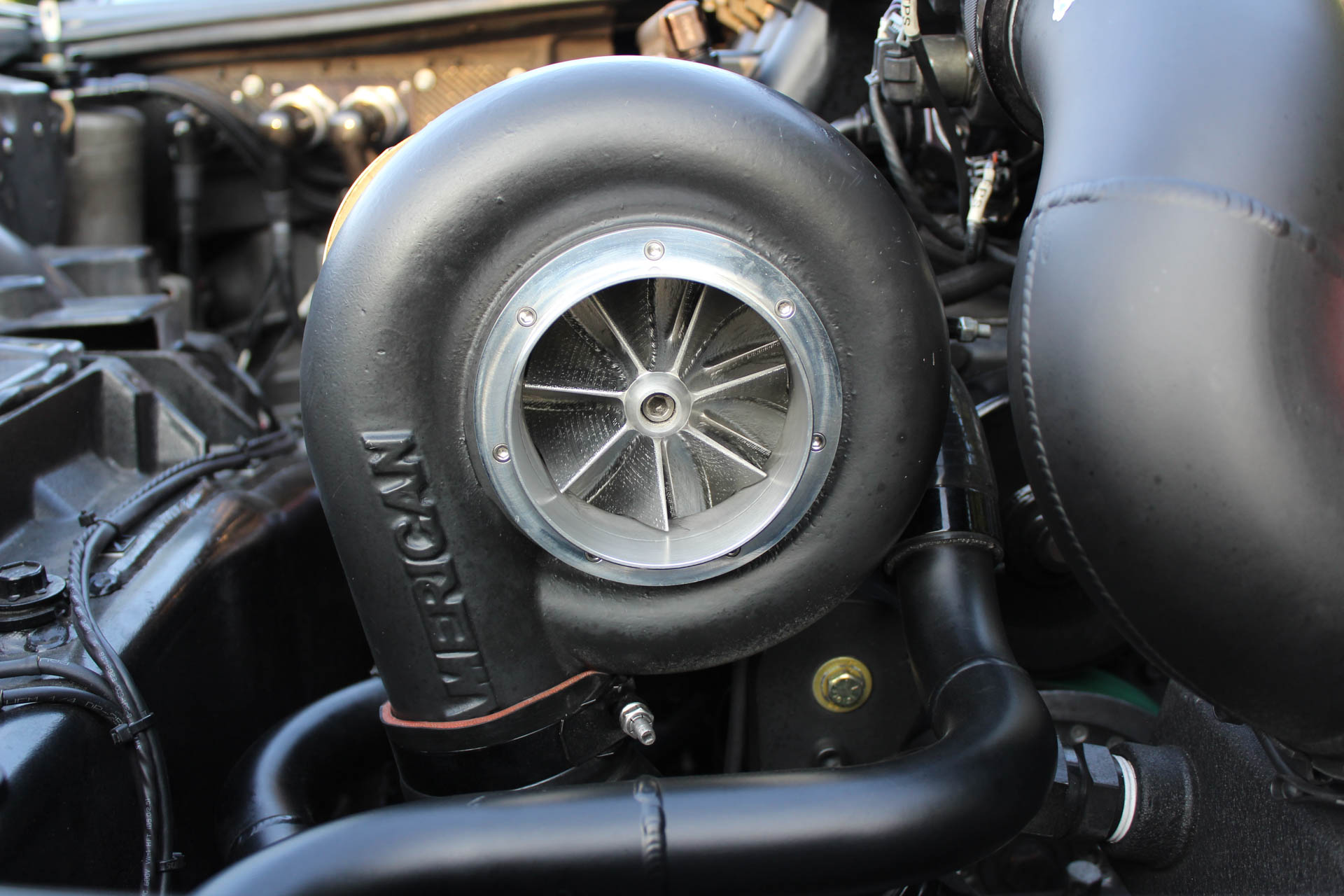Serious About Supercharging—Tech Talk with Dan Jones of American Forced Induction
By Evan J. Smith
When it comes to supercharging, there’s a few ways to develop precious boost and deliver it to the engine. Roots, Screw and Centrifugal blowers are three very popular options that will compress air for use in internal combustion powerplants. Each has pros and cons, however, most popular units will help you create just about as much power as you desire.
Dan Jones, the man behind American Forced Induction, has been in the centrifugal supercharger game for roughly 30 years and his latest venture, AFI, produces excellent options for street enthusiasts and racers alike.
“Here’s where we are, when I left ProCharger in 2007 I wasn’t supporting my family the way I needed to,” said Jones. “So basically, I stepped away and when I stepped back into it, I brought on Mark Brumitt and I went to a bunch of races and I listened to what people had to say. At first I going to build complete systems, but after talking to racers I decided to focus on the advancement of new head units.
“I thought that the head units needed to be more durable and potentially make more power, so the focus at American Forced Induction is head units, which direct bolt-ins from little to big and currently from 800-900 hp and up to the 4,000 hp level. But we’re doing it using already existing bracketry of existing blowers. This was done to simplify installation and save money for enthusiasts and racers,” he added. “I’m in the supercharger business so we’re making a modern version of the centrifugal supercharger. Any tech company will have advancements over time, and I felt there’s room for advancements.
“Everything today is reliant on one main bearing that’s adjacent to the impeller, and that’s the bearing that fails 99 times out of 100 times when these blowers break. And it does that because all the load goes through that bearing. The bearing that’s closest to the impeller has all the load, so we separated 100 percent of the thrust load with a front cover bearing on the pinion shaft. Keep in mind, there’s plenty of blowers without failures, but as you go up in power this may become an issue,” said Jones.
“It’s two things that we’ve added, one, we’re sharing some of the load to a whole new bearing and it’s never been done; and the second thing is basically, the main bearing holds the impeller on its axis, so now we have a redundancy in case of a failure. The bearings now carry and support the impeller and also locate it, but they do it separately and this helps keep the impeller in position—even in case of a failure. This will equate to less damage and helps rebuildability. The cover bearing is called the Distal bearing and it’s what’s new with this AFI design, as it handles all of the impeller thrust. We can also run a smaller set of bearings, which lowers bearing friction at speed, so they are less weight and accelerate quicker.” This is important with typical 50,000 to 80,000 rpm of impeller speed.
“There is like 20 years’ worth of newness in these units,” Jones exclaimed! AFI has already run its AF1 entry level 94mm blower with a 10-rib belt on a 2013 Vette with roughly 1,200 hp at the tires. At 3,400 lbs., and on E85, it has run 7.90 at 179 mph. Jones predicts 7.40s at 190 with the AFX 102 mm blower, and testing is underway on the AF4 140mm blower for NMCA Pro Modified, Radial vs the World and Pro Boost-style classes, plus, Jones eluded to another race-blower being tested for higher levels of competition.
“Ultimately, American Forced Induction is focused on the development of the most advanced, durable and powerful superchargers, with unparalleled power density,” said Dan Jones, president of AFI. “Our core product offerings are primarily standalone superchargers, versus ‘bolt on systems’, as our focus is core technologies and there are already numerous bolt-on systems saturating the performance marketplace.
“We manufacture superchargers specifically designed to replace others’ existing units. This saves costumers thousands, as costly complete systems and kits consisting of intercoolers, brackets, drive setups, fuel and many other previously purchased components are reused.
We are working to develop universal supercharger kits for BBC, SBC, LS/LT, Coyote, SBF (Windsor) and other platforms,” he added. “Along with highly demanded and/or more cost-effective bolt on supercharger kits for vehicles that provide consumers considerable advantages. We work with competent 3rd-party integrators that utilize our superchargers in their complete bolt-on systems and kits. Many of these integrators create niche markets which they have specialized experience. In addition, many are highly motivated to provide innovative features and benefits that are not commercially available for many vehicle platforms.”
Jones continued, “We now have several new patents pending that are directed to improved units manufactured by us, American Forced Induction. It is our belief that no other firm has more knowledge and experience, specifically pertaining to the design, unique operational characteristics and manufacturing of centrifugal superchargers, as does American Forced Induction. We used this extensive knowledge to fundamentally re-design the structural architecture of existing superchargers, thus redistributing many of the internal stresses, forces and loads that are naturally applied to the critical internal components.
Nearly all centrifugal supercharger and turbocharger volutes are cast with the impeller wall and scroll formed integrally as a single casting. “Instead, our castings only contain the scroll sections, and the impeller wall section is machined out of billet and installed into the casting. This allows for more uninterrupted flow area, which can lead to more total airflow from a smaller volute in a number of applications. It also allows the vibratory finishing process to get access to the internal air flow sections of the scroll, leaving a smoother airflow surface finish. And the casting has far more uniform wall sections, so the casting process can be streamlined, thus leaving less opportunity for porosity. This process is more costly to
manufacture, but allows more flow, primarily when a given volute is nearing its flow limits. Therefore, this can provide greater performance from a smaller volute and less turbulence and heat generally, all with greater efficiency,” Jones explained.
“We developed a highly Rigid, tapered Pinion Shaft System. Simply producing a larger impeller/pinion shaft will increase rigidity in certain areas but just transfers concentrated stress to others. It can also require less-than-optimal oversized bearings and can weaken the impeller hub. We diligently worked to develop a unique tapered impeller journal section, eliminating all pins or keyways in the impeller, and balancing the stresses far more evenly across the entire pinion shaft. We also incorporated several proprietary features to the pinion shaft as well. All of these fundamental improvements create more precise impeller positioning accuracy and reduces high-speed impeller harmonics allowing for significantly tighter impeller-to-wall air-gap clearance. This greatly improves supercharger efficiency and speed potential, too,” added Jones.
“We also eliminated the impeller shim and invented the Virtual Shim™. Centrifugal supercharger transmission length variances, specifically of the impeller shaft, drastically affect the position of the impeller in relation to the volute, and the very critical air gap. So nearly all existing centrifugal superchargers are configured with a specific sized shim, which is placed on the opposing side of the impeller’s retaining bolt or nut. This sized shim is selected, through a series of measurements and calculations during the unit’s assembly process.
Our inventive system allows each supercharger, with all of its differing component dimensions, to have its air gap set after each entire supercharger is complete, and with no shim at all. A very granular adjustment is customized to each supercharger. And allows us to very accurately hold position, which is increasingly critical when the goal is super tight air gap clearance. Again, this increases supercharger efficiency.”
Jones and his former team developed a highly efficient supercharger “oil aeration pump” and then patented it. This invention saturates the critical transmission components at low speeds and start up, but then intentionally cavitates and produces the fine oil mist. It operates with a broad range of oil levels, is not sensitive to rapid changes in supercharger motion, never needs to be primed, and requires only fractional horsepower. In addition, engine oil fed superchargers can introduce debris into the high precision supercharger transmission, causing supercharger damage or failure. And, in the event of a supercharger or turbocharger failure, debris will generally drain into an expensive engine and can distribute damaging parts throughout the entire lower end of the engine. This is why all American Forced Induction superchargers are internally lubricated.
“As an upgrade on certain supercharger models, all components in our Patent Pending Billet Volute are fully machined from billet aluminum,” Jones boasted. And always ‘spring’ back some after machining, so they lose roundness, concentricity, perpendicularity and other important geometry. Billet aluminum alloys are generally formed through forced extrusions, so the grains are far more uniform. This is why billet is such a popular material for super high-speed impellers. We believe that our Billet Volutes are the most dimensionally accurate volutes commercially available. They have almost perfectly uniform wall thickness. They are slightly lighter and have smoother air flow paths.”
“These all have tapered shaft with no pins and that’s what locates impeller on the shaft. This is a big deal because the stress trying to expand the impeller hub is spread out over a very large area as opposed to being primarily on the ends. It’s special for a supercharger because of the high speed and the temperatures,” Jones stated. “Now we’re making 3,500 horsepower in a Pro Mod, possibly shaking tires and there’s no keys, just our special taper. We’re doing everything we can do to make these blower better and safer. We only sell through installing dealers.”
Lastly, Jones wanted to note that the American Forced Induction AFX has a ProCharger D1-F2 bolt pattern and the AF1 uses the Vortech V3 V7 bolt pattern for ease of installation. All AFI blowers can utilize a serpentine of cog drive as well.
By Evan J. Smith
When it comes to supercharging, there’s a few ways to develop precious boost and deliver it to the engine. Roots, Screw and Centrifugal blowers are three very popular options that will compress air for use in internal combustion powerplants. Each has pros and cons, however, most popular units will help you create just about as much power as you desire.
Dan Jones, the man behind American Forced Induction, has been in the centrifugal supercharger game for roughly 30 years and his latest venture, AFI, produces excellent options for street enthusiasts and racers alike.
“Here’s where we are, when I left ProCharger in 2007 I wasn’t supporting my family the way I needed to,” said Jones. “So basically, I stepped away and when I stepped back into it, I brought on Mark Brumitt and I went to a bunch of races and I listened to what people had to say. At first I going to build complete systems, but after talking to racers I decided to focus on the advancement of new head units.
“I thought that the head units needed to be more durable and potentially make more power, so the focus at American Forced Induction is head units, which direct bolt-ins from little to big and currently from 800-900 hp and up to the 4,000 hp level. But we’re doing it using already existing bracketry of existing blowers. This was done to simplify installation and save money for enthusiasts and racers,” he added. “I’m in the supercharger business so we’re making a modern version of the centrifugal supercharger. Any tech company will have advancements over time, and I felt there’s room for advancements.
“Everything today is reliant on one main bearing that’s adjacent to the impeller, and that’s the bearing that fails 99 times out of 100 times when these blowers break. And it does that because all the load goes through that bearing. The bearing that’s closest to the impeller has all the load, so we separated 100 percent of the thrust load with a front cover bearing on the pinion shaft. Keep in mind, there’s plenty of blowers without failures, but as you go up in power this may become an issue,” said Jones.
“It’s two things that we’ve added, one, we’re sharing some of the load to a whole new bearing and it’s never been done; and the second thing is basically, the main bearing holds the impeller on its axis, so now we have a redundancy in case of a failure. The bearings now carry and support the impeller and also locate it, but they do it separately and this helps keep the impeller in position—even in case of a failure. This will equate to less damage and helps rebuildability. The cover bearing is called the Distal bearing and it’s what’s new with this AFI design, as it handles all of the impeller thrust. We can also run a smaller set of bearings, which lowers bearing friction at speed, so they are less weight and accelerate quicker.” This is important with typical 50,000 to 80,000 rpm of impeller speed.
“There is like 20 years’ worth of newness in these units,” Jones exclaimed! AFI has already run its AF1 entry level 94mm blower with a 10-rib belt on a 2013 Vette with roughly 1,200 hp at the tires. At 3,400 lbs., and on E85, it has run 7.90 at 179 mph. Jones predicts 7.40s at 190 with the AFX 102 mm blower, and testing is underway on the AF4 140mm blower for NMCA Pro Modified, Radial vs the World and Pro Boost-style classes, plus, Jones eluded to another race-blower being tested for higher levels of competition.
“Ultimately, American Forced Induction is focused on the development of the most advanced, durable and powerful superchargers, with unparalleled power density,” said Dan Jones, president of AFI. “Our core product offerings are primarily standalone superchargers, versus ‘bolt on systems’, as our focus is core technologies and there are already numerous bolt-on systems saturating the performance marketplace.
“We manufacture superchargers specifically designed to replace others’ existing units. This saves costumers thousands, as costly complete systems and kits consisting of intercoolers, brackets, drive setups, fuel and many other previously purchased components are reused.
We are working to develop universal supercharger kits for BBC, SBC, LS/LT, Coyote, SBF (Windsor) and other platforms,” he added. “Along with highly demanded and/or more cost-effective bolt on supercharger kits for vehicles that provide consumers considerable advantages. We work with competent 3rd-party integrators that utilize our superchargers in their complete bolt-on systems and kits. Many of these integrators create niche markets which they have specialized experience. In addition, many are highly motivated to provide innovative features and benefits that are not commercially available for many vehicle platforms.”
Jones continued, “We now have several new patents pending that are directed to improved units manufactured by us, American Forced Induction. It is our belief that no other firm has more knowledge and experience, specifically pertaining to the design, unique operational characteristics and manufacturing of centrifugal superchargers, as does American Forced Induction. We used this extensive knowledge to fundamentally re-design the structural architecture of existing superchargers, thus redistributing many of the internal stresses, forces and loads that are naturally applied to the critical internal components.
Nearly all centrifugal supercharger and turbocharger volutes are cast with the impeller wall and scroll formed integrally as a single casting. “Instead, our castings only contain the scroll sections, and the impeller wall section is machined out of billet and installed into the casting. This allows for more uninterrupted flow area, which can lead to more total airflow from a smaller volute in a number of applications. It also allows the vibratory finishing process to get access to the internal air flow sections of the scroll, leaving a smoother airflow surface finish. And the casting has far more uniform wall sections, so the casting process can be streamlined, thus leaving less opportunity for porosity. This process is more costly to
manufacture, but allows more flow, primarily when a given volute is nearing its flow limits. Therefore, this can provide greater performance from a smaller volute and less turbulence and heat generally, all with greater efficiency,” Jones explained.
“We developed a highly Rigid, tapered Pinion Shaft System. Simply producing a larger impeller/pinion shaft will increase rigidity in certain areas but just transfers concentrated stress to others. It can also require less-than-optimal oversized bearings and can weaken the impeller hub. We diligently worked to develop a unique tapered impeller journal section, eliminating all pins or keyways in the impeller, and balancing the stresses far more evenly across the entire pinion shaft. We also incorporated several proprietary features to the pinion shaft as well. All of these fundamental improvements create more precise impeller positioning accuracy and reduces high-speed impeller harmonics allowing for significantly tighter impeller-to-wall air-gap clearance. This greatly improves supercharger efficiency and speed potential, too,” added Jones.
“We also eliminated the impeller shim and invented the Virtual Shim™. Centrifugal supercharger transmission length variances, specifically of the impeller shaft, drastically affect the position of the impeller in relation to the volute, and the very critical air gap. So nearly all existing centrifugal superchargers are configured with a specific sized shim, which is placed on the opposing side of the impeller’s retaining bolt or nut. This sized shim is selected, through a series of measurements and calculations during the unit’s assembly process.
Our inventive system allows each supercharger, with all of its differing component dimensions, to have its air gap set after each entire supercharger is complete, and with no shim at all. A very granular adjustment is customized to each supercharger. And allows us to very accurately hold position, which is increasingly critical when the goal is super tight air gap clearance. Again, this increases supercharger efficiency.”
Jones and his former team developed a highly efficient supercharger “oil aeration pump” and then patented it. This invention saturates the critical transmission components at low speeds and start up, but then intentionally cavitates and produces the fine oil mist. It operates with a broad range of oil levels, is not sensitive to rapid changes in supercharger motion, never needs to be primed, and requires only fractional horsepower. In addition, engine oil fed superchargers can introduce debris into the high precision supercharger transmission, causing supercharger damage or failure. And, in the event of a supercharger or turbocharger failure, debris will generally drain into an expensive engine and can distribute damaging parts throughout the entire lower end of the engine. This is why all American Forced Induction superchargers are internally lubricated.
“As an upgrade on certain supercharger models, all components in our Patent Pending Billet Volute are fully machined from billet aluminum,” Jones boasted. And always ‘spring’ back some after machining, so they lose roundness, concentricity, perpendicularity and other important geometry. Billet aluminum alloys are generally formed through forced extrusions, so the grains are far more uniform. This is why billet is such a popular material for super high-speed impellers. We believe that our Billet Volutes are the most dimensionally accurate volutes commercially available. They have almost perfectly uniform wall thickness. They are slightly lighter and have smoother air flow paths.”
“These all have tapered shaft with no pins and that’s what locates impeller on the shaft. This is a big deal because the stress trying to expand the impeller hub is spread out over a very large area as opposed to being primarily on the ends. It’s special for a supercharger because of the high speed and the temperatures,” Jones stated. “Now we’re making 3,500 horsepower in a Pro Mod, possibly shaking tires and there’s no keys, just our special taper. We’re doing everything we can do to make these blower better and safer. We only sell through installing dealers.”
Lastly, Jones wanted to note that the American Forced Induction AFX has a ProCharger D1-F2 bolt pattern and the AF1 uses the Vortech V3 V7 bolt pattern for ease of installation. All AFI blowers can utilize a serpentine of cog drive as well.



